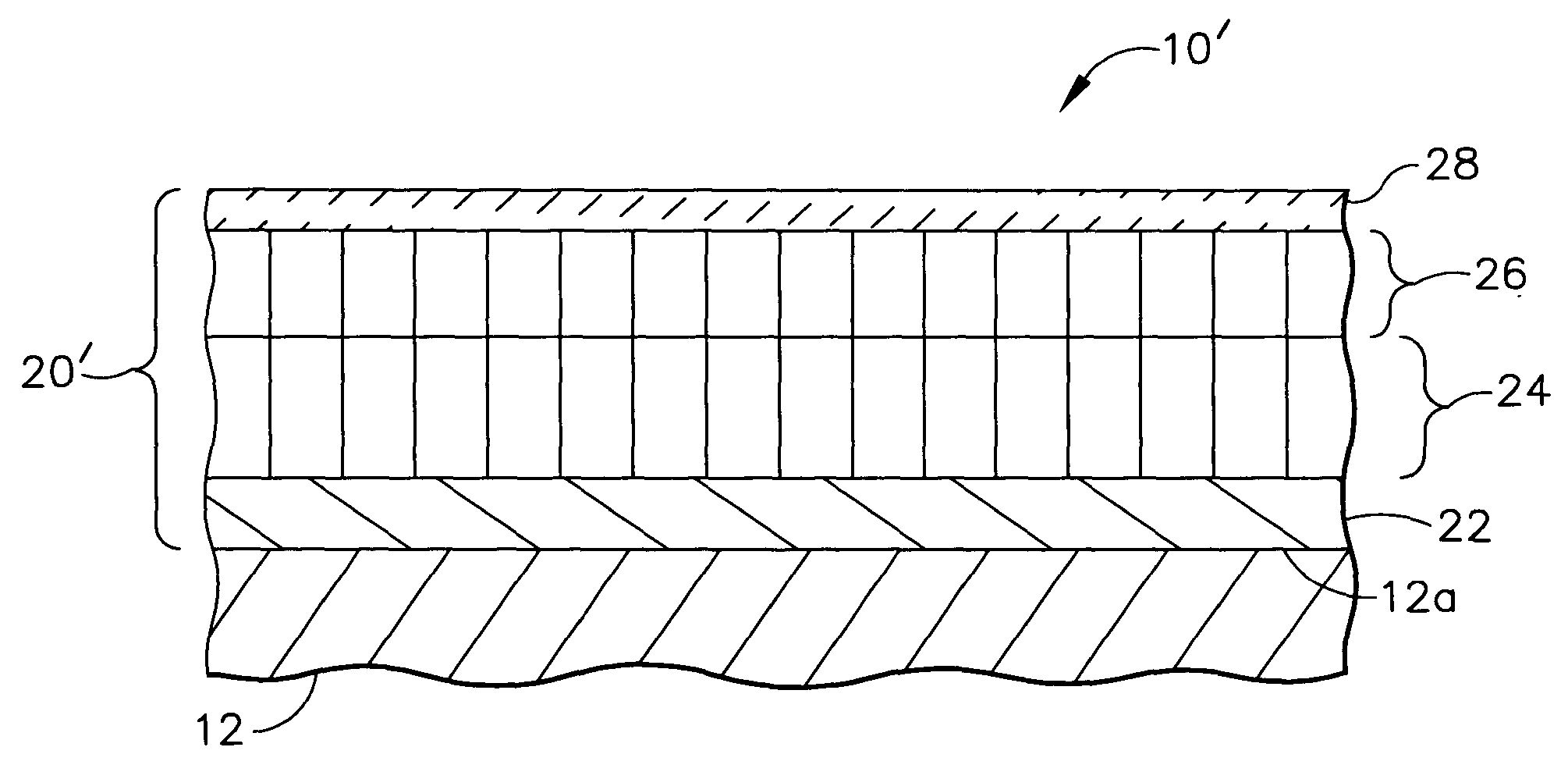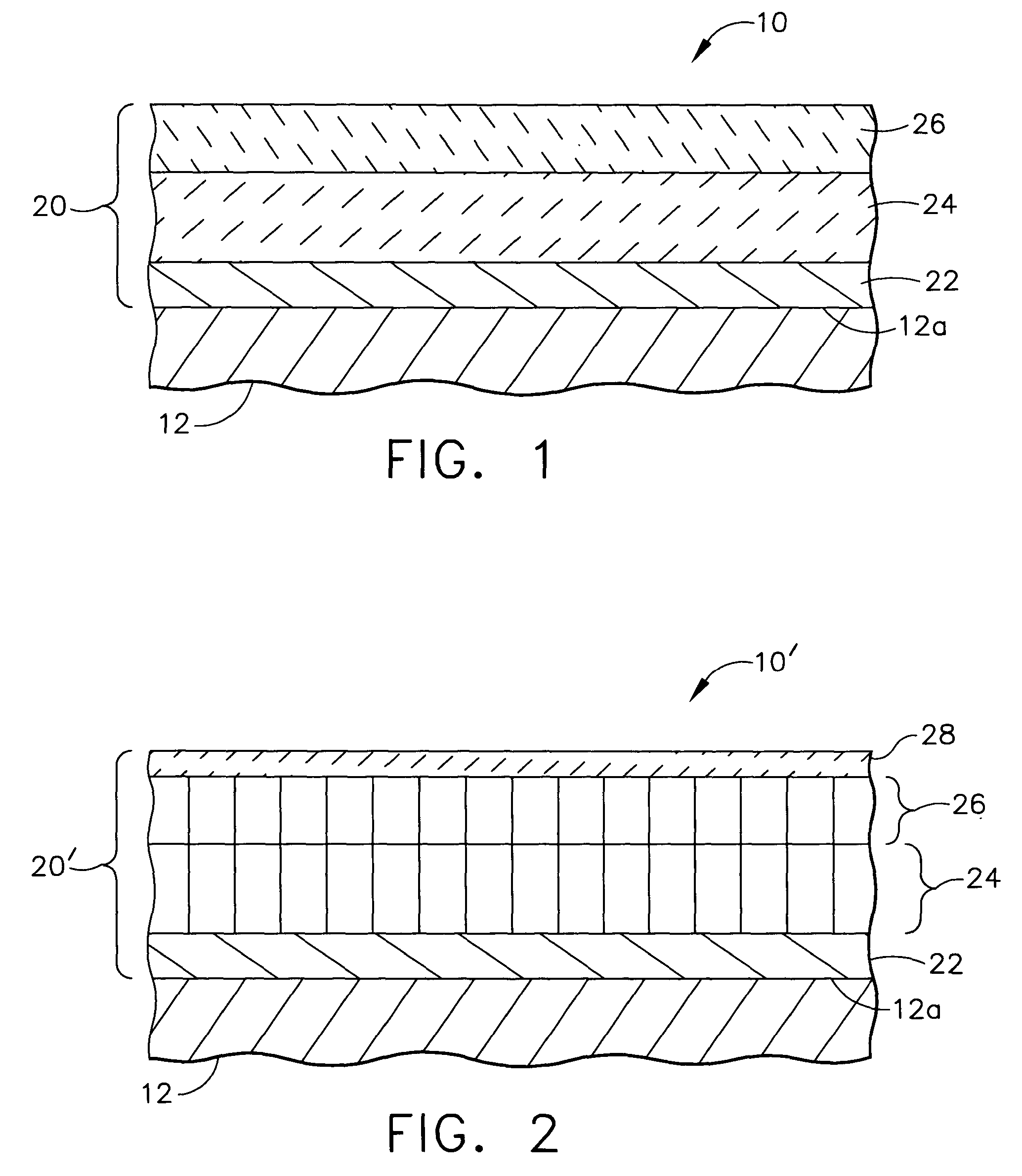Thermal barrier coating with stabilized compliant microstructure
a technology of microstructure and thermal barrier coating, which is applied in the direction of liquid fuel engine components, magnetic recording, record information storage, etc., can solve the problems of increasing heat transfer into the component, unable to operate at increasingly high gas temperature within the engine, and no longer suitable for layering
- Summary
- Abstract
- Description
- Claims
- Application Information
AI Technical Summary
Benefits of technology
Problems solved by technology
Method used
Image
Examples
Embodiment Construction
[0018] The following detailed description is of the best currently contemplated modes of carrying out the invention. The description is not to be taken in a limiting sense, but is made merely for the purpose of illustrating the general principles of the invention, since the scope of the invention is best defined by the appended claims.
[0019] The present invention generally provides thermal barrier coating compositions, articles of manufacture, and methods for preparing thermal barrier coated components for advanced gas turbine engines. For example, the present invention generally provides a thermal barrier coating for gas turbine components, such as combustors, liners, shrouds, and airfoils. Thermal barrier coatings of the invention have a columnar microstructure comprising at least one segmented columnar ceramic layers, in which the hottest, outer columnar ceramic layer may comprise yttria stabilized hafnia, and a high melting temperature structure-stabilizing material deposited i...
PUM
| Property | Measurement | Unit |
|---|---|---|
| temperature | aaaaa | aaaaa |
| thickness | aaaaa | aaaaa |
| thickness | aaaaa | aaaaa |
Abstract
Description
Claims
Application Information
 Login to View More
Login to View More - R&D
- Intellectual Property
- Life Sciences
- Materials
- Tech Scout
- Unparalleled Data Quality
- Higher Quality Content
- 60% Fewer Hallucinations
Browse by: Latest US Patents, China's latest patents, Technical Efficacy Thesaurus, Application Domain, Technology Topic, Popular Technical Reports.
© 2025 PatSnap. All rights reserved.Legal|Privacy policy|Modern Slavery Act Transparency Statement|Sitemap|About US| Contact US: help@patsnap.com



